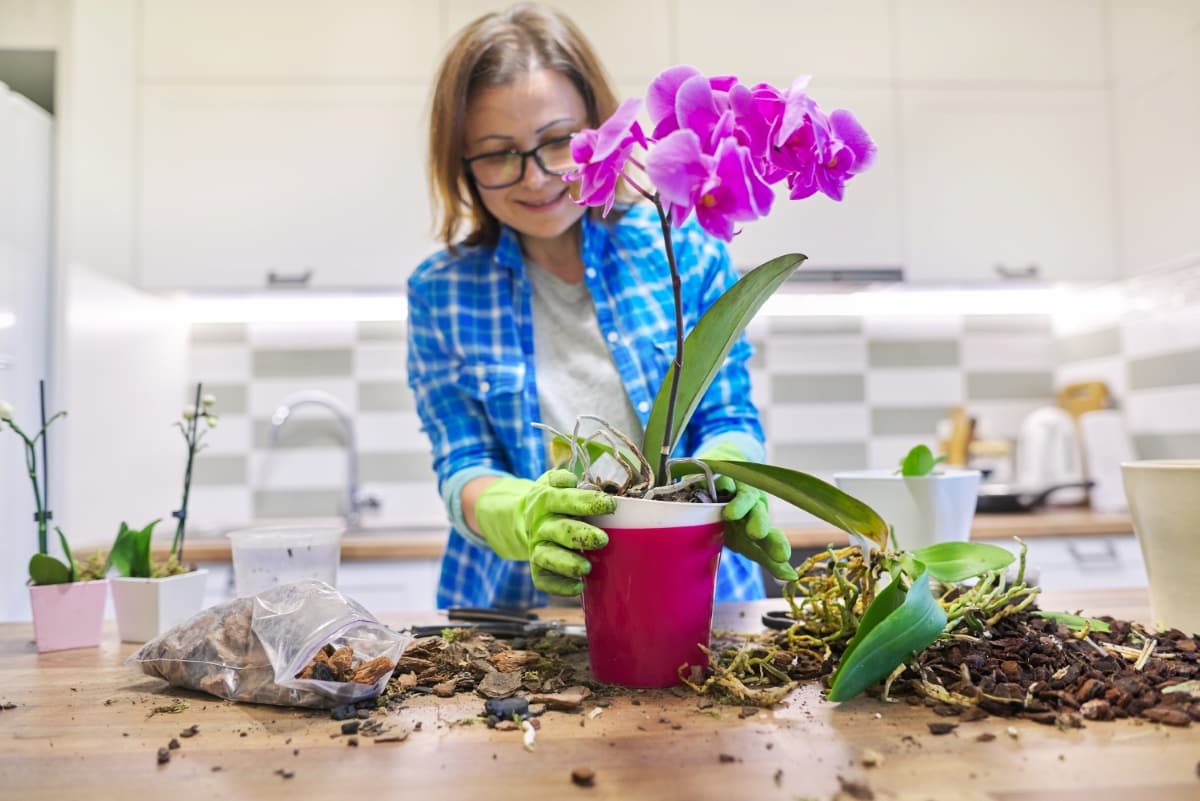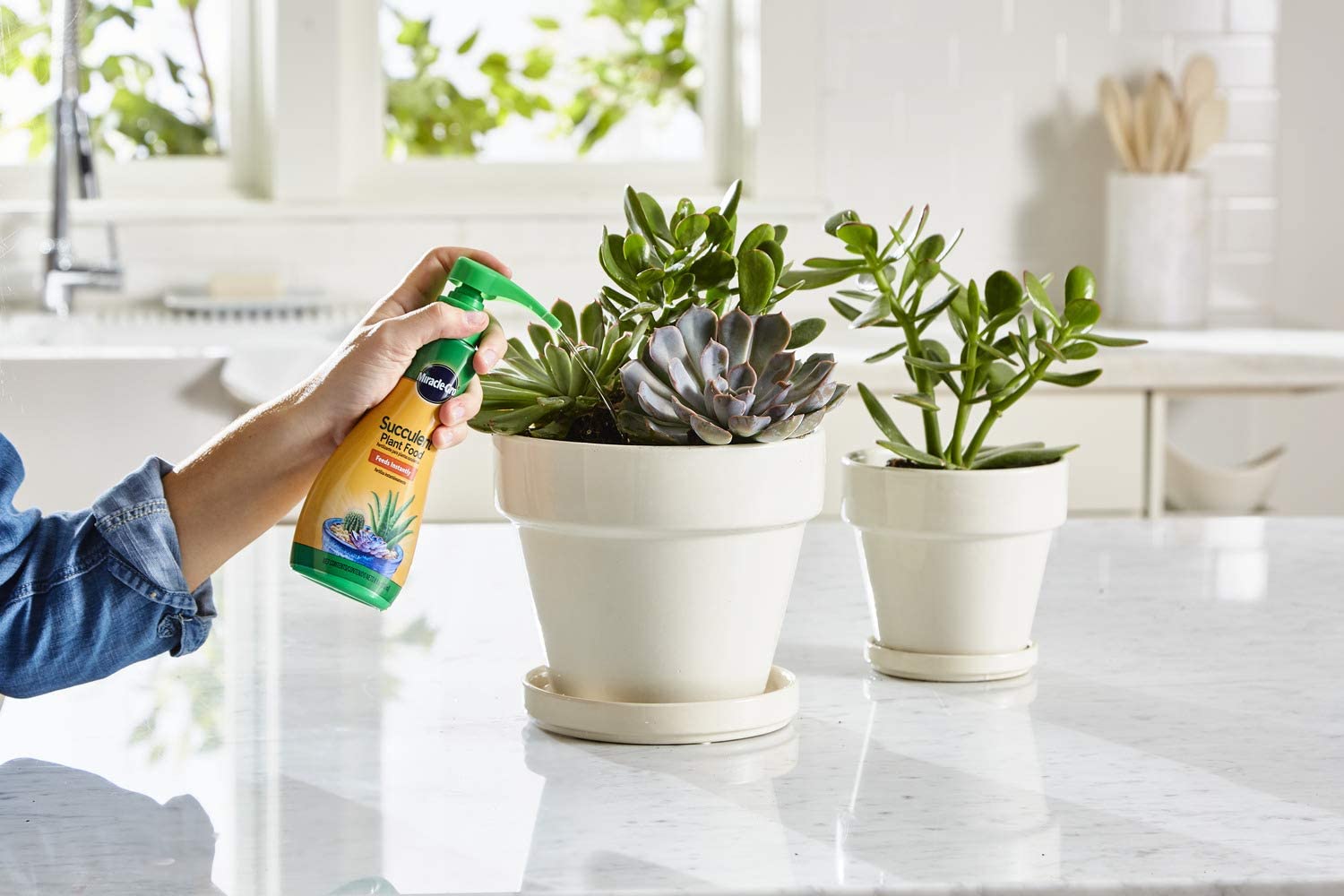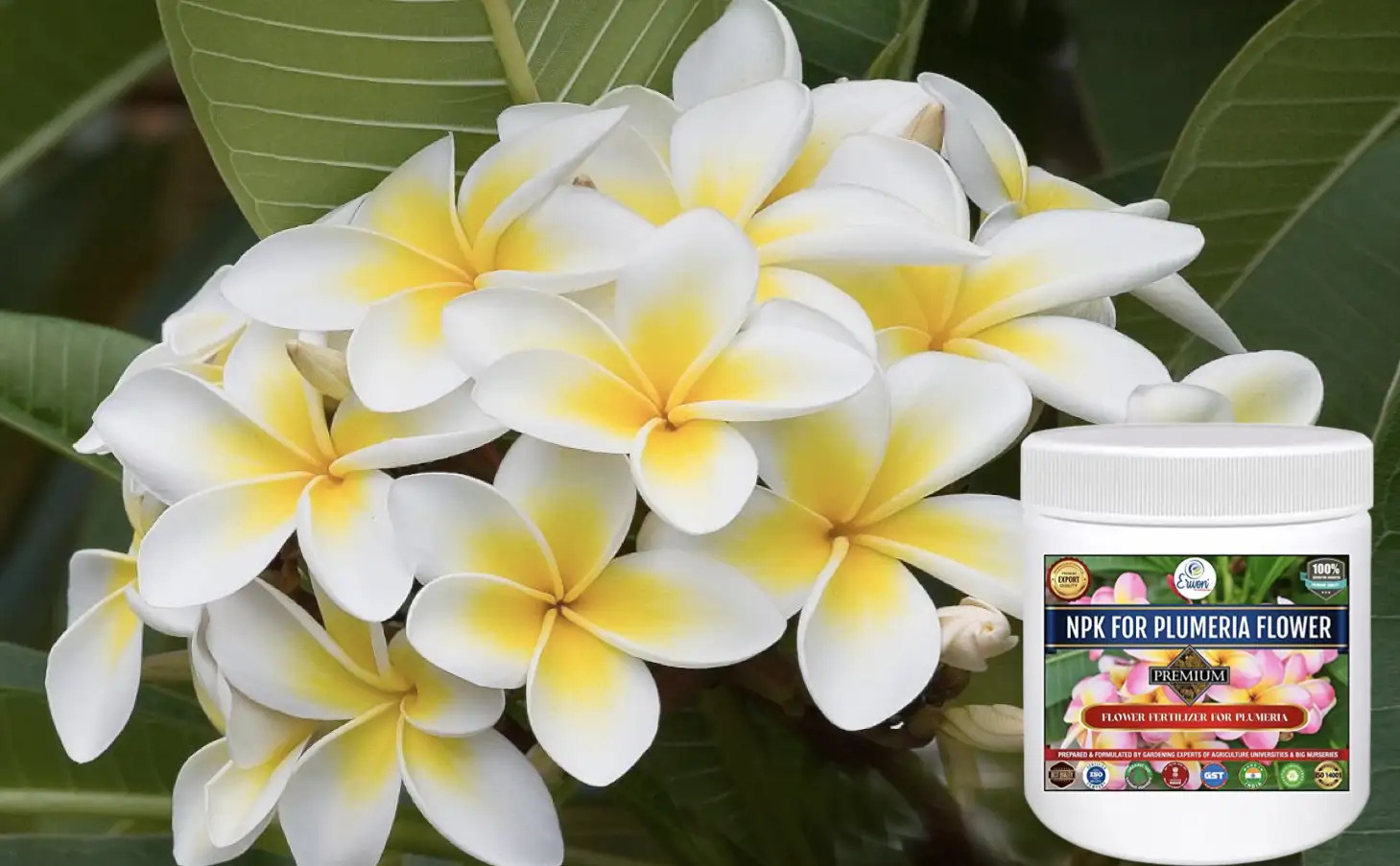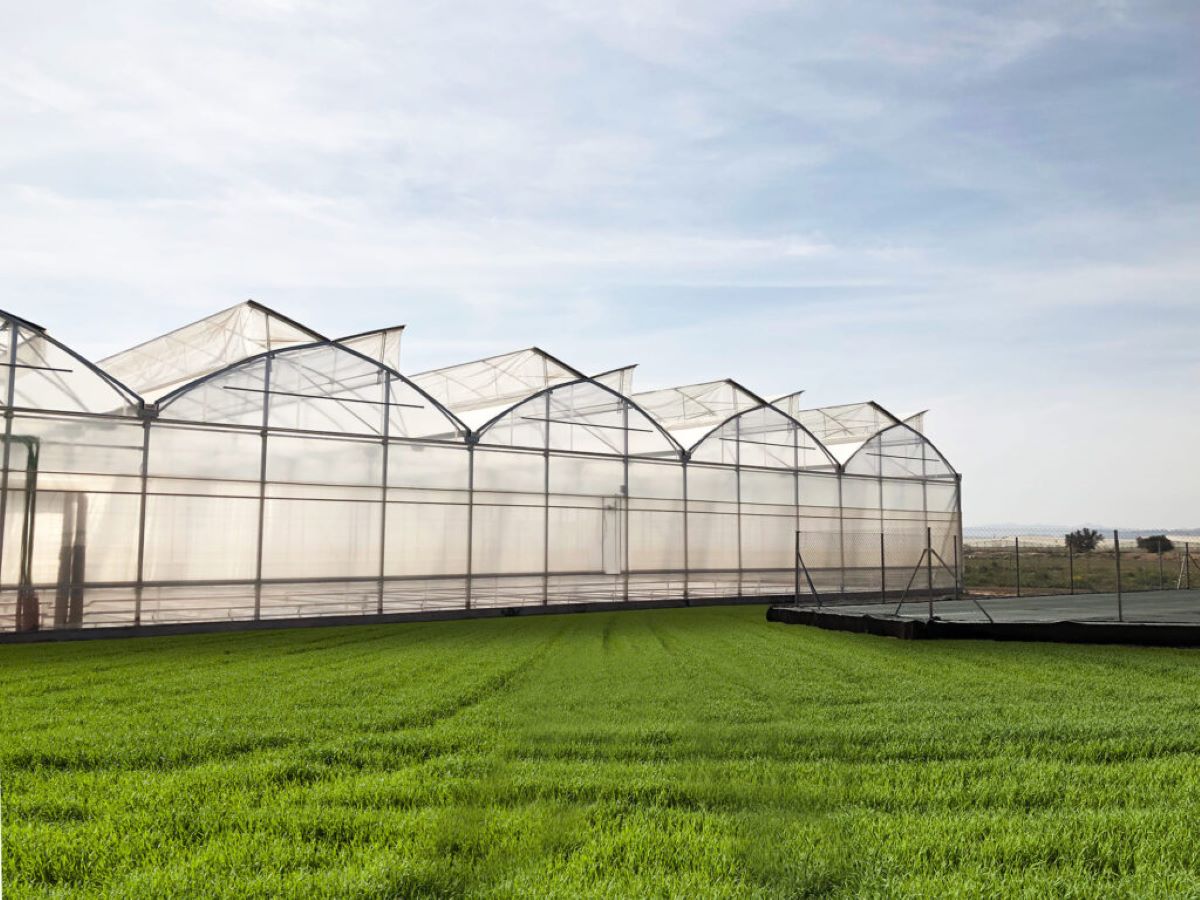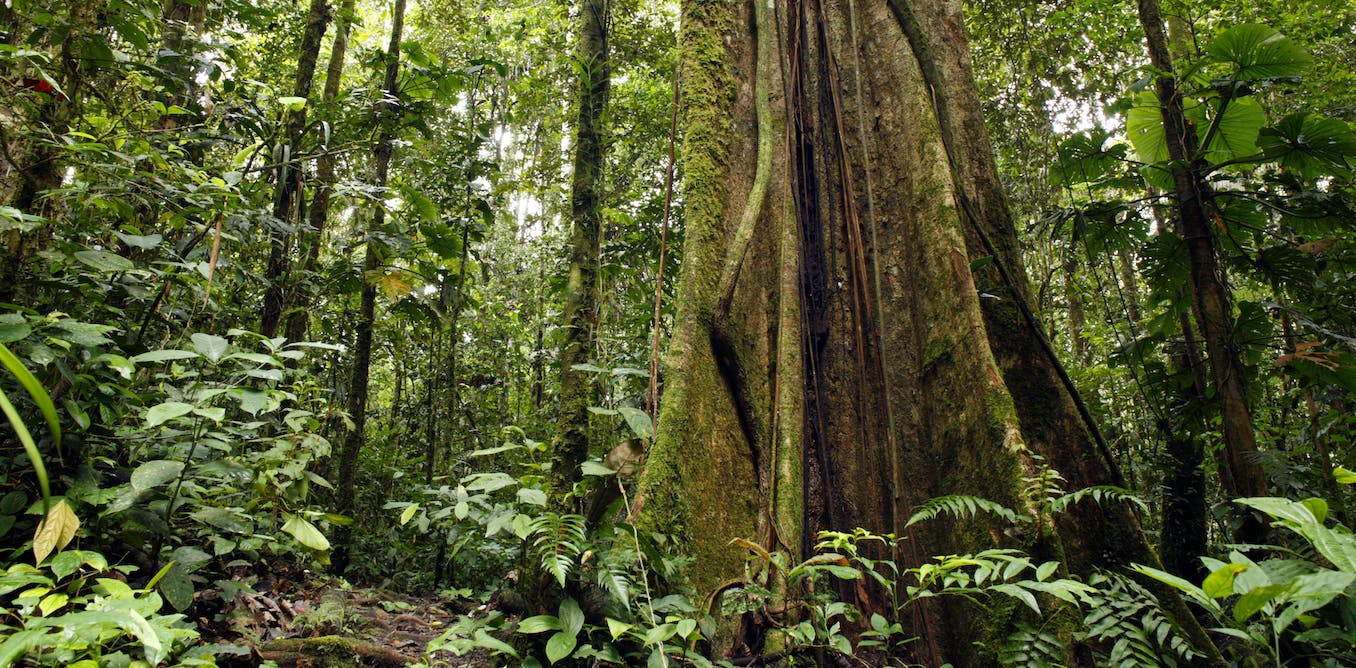Home>Gardening Basics>Understanding Soil>What Kind Of Soil For Aloe Plant


Understanding Soil
What Kind Of Soil For Aloe Plant
Published: February 7, 2024
Discover the perfect kind of soil for your aloe plant with our comprehensive guide. Improve your understanding of soil to ensure optimal growth and health of your beloved aloe plant.
(Many of the links in this article redirect to a specific reviewed product. Your purchase of these products through affiliate links helps to generate commission for Chicagolandgardening.com, at no extra cost. Learn more)
Table of Contents
Introduction
Welcome to the world of Aloe plants, where the beauty and health benefits of these succulents thrive in the right conditions. Whether you’ve just acquired an Aloe plant or are considering getting one, understanding the importance of soil selection is crucial for their overall well-being.
Aloe plants, also known as Aloe vera, are renowned for their medicinal properties and their ability to soothe burns and skin irritations. These versatile plants can also enhance the aesthetic appeal of any indoor or outdoor space with their striking rosette-shaped leaves and vibrant green color.
While Aloe plants are relatively low-maintenance and can adapt to various environments, providing them with the proper soil is essential for their growth and longevity. The soil acts as the foundation for their root system, ensuring adequate drainage and nutrient availability.
In this article, we will delve into the characteristics of ideal soil for Aloe plants, explore various types of suitable soil, discuss soil amendments, and provide tips for preparing the soil for planting. By the end, you’ll be equipped with the knowledge needed to create the perfect soil environment for your Aloe plants.
Understanding Aloe Plants
Aloe plants belong to the Aloe genus, which comprises over 500 different species. These succulent plants are native to arid regions of Africa, but they are now cultivated worldwide for their unique beauty and therapeutic properties.
One of the most well-known species is Aloe vera, which is highly valued for its gel-filled leaves that contain a range of beneficial compounds. The gel is commonly used in skincare products, nutritional supplements, and natural remedies for various ailments.
Aloe plants have a distinctive appearance, with thick, fleshy leaves arranged in a rosette pattern. The leaves are succulent, meaning they store water to thrive in dry conditions. This adaptation allows them to survive in arid climates with limited rainfall.
One of the remarkable characteristics of Aloe plants is their ability to propagate easily. They can reproduce through offsets, which are small plantlets that grow from the base of the parent plant. These offsets can be separated and planted to grow new Aloe plants.
In addition to their beauty and medicinal properties, Aloe plants also provide numerous environmental benefits. They are known to improve air quality by absorbing carbon dioxide and releasing oxygen, making them excellent natural air purifiers. Furthermore, they can attract pollinators like bees and butterflies, contributing to the overall health of ecosystems.
Having a basic understanding of Aloe plants will help you appreciate their unique qualities and better care for them. Now, let’s explore the importance of selecting the right soil for these remarkable plants.
Importance of Choosing the Right Soil
When it comes to the success of your Aloe plants, choosing the right soil is of paramount importance. Soil serves as the medium through which plants obtain water, nutrients, and oxygen necessary for healthy growth. It supports the root system and provides stability for the plant.
Optimal soil conditions are crucial for Aloe plants because they have unique water and nutrient requirements. A well-draining soil will prevent waterlogged roots, which can lead to root rot and eventual plant death. Conversely, soil that drains too quickly may not retain enough moisture for the plant to thrive.
The right soil also provides a nutrient-rich environment that allows Aloe plants to grow and develop vigorously. It should contain essential minerals and organic matter that support root growth, leaf development, and overall plant health.
In addition, the soil pH affects the availability of nutrients to the plant. Aloe plants prefer a slightly acidic to neutral pH range of 5.5 to 7.0. If the soil pH is too high or too low, certain nutrients may become unavailable, leading to nutrient deficiencies or toxicities.
Another reason for choosing the right soil is that it promotes proper root development. Aloe plants have a shallow but extensive root system. The soil structure should allow roots to spread and establish a strong foundation, enabling the plant to efficiently extract nutrients and water from the surrounding soil.
Furthermore, the soil’s texture and composition can impact the plant’s overall aesthetic appeal. A well-drained and fluffy soil allows the Aloe plant’s rosette shape and distinctive foliage to flourish, enhancing the visual impact of the plant in your garden or indoor space.
In summary, choosing the right soil for your Aloe plants is essential to ensure their well-being, growth, and longevity. It provides the necessary conditions for proper drainage, nutrient uptake, and root development. Now that we understand the importance of soil selection, let’s explore the characteristics of an ideal soil for Aloe plants.
Characteristics of Ideal Soil for Aloe Plants
The ideal soil for Aloe plants should possess specific characteristics that create a favorable environment for their growth and vitality. Here are the key attributes to look for when selecting soil for your Aloe plants:
- Well-draining: Aloe plants dislike soggy soil. The soil should have excellent drainage properties, allowing excess water to flow away from the roots. This prevents waterlogging and reduces the risk of root rot.
- Loose and airy: Aloe plants thrive in soil that is loose and well-aerated. The soil structure should be friable and crumbly, permitting the roots to easily penetrate and grow. This allows for efficient nutrient absorption and prevents compaction.
- Slightly acidic to neutral pH: Aloe plants prefer soil with a pH range of 5.5 to 7.0. This slightly acidic to neutral pH helps facilitate nutrient uptake by the roots. It is important to avoid extremely acidic or alkaline soil, as it can hinder nutrient availability.
- Rich in organic matter: Adding organic matter like compost or well-rotted manure to the soil enhances its fertility and nutrient content. Organic matter improves the soil structure, moisture retention, and microbial activity, which all contribute to the overall health of the Aloe plants.
- Mineral-rich: Aloe plants require essential minerals for growth and development. The soil should contain a balanced mix of minerals, including nitrogen, phosphorus, and potassium. These macronutrients, along with micronutrients like iron and magnesium, support various physiological processes in the plant.
By providing these characteristics in the soil, you ensure that your Aloe plants have the right foundation for their growth and overall well-being. However, it’s important to note that the specific soil requirements may vary slightly among different Aloe species. Consulting plant-specific resources or experts can help you determine any additional considerations for your specific Aloe plant.
Types of Soil Suitable for Aloe Plants
There are several types of soil that are suitable for growing Aloe plants. While the ideal soil composition may vary slightly depending on the specific Aloe species, the following soil types are generally well-suited for their growth:
- Sandy Soil: Sandy soil is characterized by its large particle size and excellent drainage. This type of soil allows water to flow through quickly, preventing waterlogging and ensuring that the Aloe plant’s roots avoid prolonged exposure to excess moisture.
- Loamy Soil: Loamy soil is a well-balanced combination of sand, silt, and clay. It offers good drainage while retaining moisture and nutrients. This soil type is often considered ideal for growing a wide range of plants, including Aloe species.
- Sandy loam Soil: Sandy loam soil is a variation of loamy soil with a higher proportion of sand. It provides the benefits of good drainage and moisture retention, making it suitable for Aloe plants.
- Rocky or Gravelly Soil: Aloe plants can adapt well to rocky or gravelly soil conditions. These soil types tend to have excellent drainage properties and can mimic the natural habitat of Aloe plants in their native environments.
- Cactus Mix or Succulent Soil: Commercially available cactus mix or succulent soil is specifically formulated for the needs of succulent plants like Aloe. These soils are usually well-draining, nutrient-rich, and tailored to the unique requirements of Aloe plants.
It’s important to note that regardless of the soil type, incorporating organic matter like compost into the soil can greatly enhance its fertility and nutrient content. Organic matter improves soil structure, encourages beneficial microbial activity, and helps retain moisture, creating an optimal environment for Aloe plants to thrive.
When selecting soil, it’s also essential to consider the container or planting location. If you’re growing Aloe plants in pots or containers, ensure they have drainage holes to prevent excess water retention. If planting Aloe plants in the ground, ensure the soil is well-prepared and free of any compacted areas that could hinder root growth.
By understanding the soil types suitable for Aloe plants, you can choose the most compatible soil composition or create a custom mix that meets the specific needs of your Aloe species.
Soil Amendments for Aloe Plants
While Aloe plants can thrive in various soil types, incorporating soil amendments can further enhance their growth and overall health. These amendments help improve soil structure, enhance nutrient availability, and promote optimal moisture retention. Here are some common soil amendments that can benefit your Aloe plants:
- Organic Matter: Adding organic matter such as compost, well-rotted manure, or leaf mold to the soil enriches its nutrient content and enhances its ability to retain moisture. Organic matter improves soil structure, increases microbial activity, and provides a steady release of nutrients over time.
- Perlite or Pumice: These lightweight, volcanic rock-based materials can be added to the soil mix to improve drainage and aeration. Perlite and pumice help prevent waterlogged soil, ensuring the roots of Aloe plants do not sit in excess moisture, which can lead to root rot.
- Sand: If the existing soil is heavy and poorly draining, amending it with sand can improve drainage and prevent waterlogging. Incorporating sand into the soil mix helps create a well-draining environment that closely mimics the natural habitat of Aloe plants.
- Coconut Coir: Coconut coir, derived from coconut husks, is a sustainable alternative to peat moss. It enhances moisture retention and improves soil structure, making it an excellent amendment for Aloe plants. Coconut coir is also environmentally friendly, as it is a renewable resource.
- Vermiculite: Vermiculite is a lightweight, mineral-based amendment that helps retain moisture in the soil, ensuring the roots of Aloe plants have access to water. It also improves soil aeration and nutrient retention, contributing to the overall health and growth of the plants.
When incorporating soil amendments, it is essential to consider the specific needs of your Aloe plants and the existing soil composition. A soil test can provide valuable information about nutrient levels and pH, helping you determine the appropriate amendments to use.
Keep in mind that soil amendments should be well-mixed with the existing soil to ensure even distribution. The proportion of amendments used can vary based on the desired soil composition and the specific requirements of the Aloe plants you are growing.
By incorporating these soil amendments, you can customize the soil to create an optimal growing environment for your Aloe plants, supporting their overall health and promoting robust growth.
Preparing the Soil for Aloe Planting
Properly preparing the soil before planting your Aloe plants is crucial to ensure their successful establishment and long-term growth. Follow these steps to prepare the soil for planting your Aloe:
- Test the Soil: Conduct a soil test to determine the pH level and nutrient content of your soil. This will help you understand its composition and identify any necessary amendments.
- Clear the Area: Remove any weeds, rocks, or debris from the planting area. This will prevent competition for nutrients and eliminate potential barriers to root growth.
- Amend the Soil: Based on the results of your soil test, incorporate the necessary soil amendments to improve drainage, nutrient content, and overall soil quality. Mix these amendments thoroughly with the existing soil.
- Work the Soil: Use a garden fork or tiller to loosen the soil and break up any compacted areas. This will improve aeration and allow the roots of your Aloe plants to penetrate the soil more easily.
- Level the Soil: Smooth the soil surface, ensuring it is even and free of any large clumps. This will provide a stable base for planting your Aloe plants.
- Dig Planting Holes: Dig holes in the prepared soil that are slightly larger and deeper than the root ball of each Aloe plant. This will allow room for the roots to spread and establish themselves.
- Place the Plants: Gently place each Aloe plant into its respective planting hole, ensuring that the top of the root ball is level with the soil surface. Position the plants with adequate spacing to allow for future growth.
- Backfill and Firm the Soil: Fill the planting holes with the amended soil mixture, gently pressing it around the root ball to eliminate air pockets. Firm the soil around the base of each plant to provide stability.
- Water the Plants: After planting, thoroughly water the Aloe plants to settle the soil and provide initial hydration. Be mindful not to overwater, as Aloe plants prefer slightly dry conditions.
- Mulch the Soil: Apply a layer of organic mulch around the base of each Aloe plant to help retain moisture, suppress weed growth, and moderate soil temperature.
By following these steps, you will ensure that the soil is properly prepared to provide an ideal environment for your Aloe plants to thrive. Remember to monitor soil moisture levels and adjust watering accordingly to maintain healthy growth.
Common Mistakes to Avoid in Soil Selection for Aloe Plants
Choosing the right soil for your Aloe plants is crucial for their health and growth. However, there are some common mistakes that should be avoided when selecting soil for Aloe plants. By being aware of these mistakes, you can ensure the optimal conditions for your Aloe’s success. Here are the most common mistakes to avoid:
- Using Heavy Clay Soil: Aloe plants dislike heavy clay soil that retains water and lacks proper drainage. Avoid using clay soil or amend it with materials like sand or organic matter to improve its drainage characteristics.
- Opting for Dense and Compact Soil: Aloe plants require loose and well-aerated soil to allow for root development and healthy growth. Avoid using dense and compact soil that restricts root penetration and inhibits nutrient absorption.
- Choosing Soil with Poor Drainage: Excessive moisture around the roots can lead to root rot and other diseases. Avoid using soil with poor drainage, such as soil that easily becomes waterlogged or does not allow water to pass through.
- Ignoring Soil pH: Aloe plants prefer a slightly acidic to neutral pH range of 5.5 to 7.0. Avoid using soil with extreme pH levels, as it can hinder nutrient availability and affect plant growth.
- Forgetting About Nutrient Content: Soil lacking essential nutrients can lead to poor growth and nutrient deficiencies in Aloe plants. Avoid using soil that is depleted of nutrients or neglecting the addition of organic matter or fertilizer to replenish the soil’s nutrient content.
- Overlooking Proper Soil Preparation: Failing to prepare the soil adequately before planting can hinder the establishment and growth of Aloe plants. Ensure you thoroughly amend and work the soil to provide optimal conditions for root development and nutrient absorption.
- Using Contaminated or Chemical-laden Soil: Soil contaminated with pesticides, herbicides, or other chemicals can be harmful to Aloe plants. Avoid using soil from potentially contaminated sources and opt for organic or pesticide-free soil options.
- Overwatering: Aloe plants prefer slightly dry conditions and are susceptible to root rot when overwatered. Avoid excessive watering and ensure the soil has proper drainage to prevent waterlogged roots.
- Neglecting Soil Testing: Not testing the soil for pH level and nutrient content can result in improper soil selection. Conducting a soil test helps you understand its composition and make informed decisions about amendments and fertilization.
- Ignoring Aloe Species-Specific Soil Requirements: Different Aloe species may have specific soil preferences. Avoid assuming that all Aloe plants have the same soil requirements and refer to plant-specific resources or experts for species-specific soil recommendations.
By avoiding these common mistakes, you can ensure that the soil you choose provides the optimal conditions for your Aloe plants’ growth, vitality, and overall well-being.
Conclusion
Choosing the right soil for your Aloe plants is essential for their overall health and vitality. Understanding their specific soil preferences and providing the proper conditions will enable them to thrive and flourish. The ideal soil for Aloe plants is well-draining, loose, slightly acidic to neutral in pH, rich in organic matter, and mineral-rich.
By selecting the right soil type, such as sandy soil, loamy soil, or cactus mix, you can create an optimal environment for your Aloe plants. Incorporating soil amendments like organic matter, perlite, or coconut coir can further enhance the soil’s fertility, drainage, and moisture retention.
Properly preparing the soil before planting your Aloe plants, including clearing the area, amending the soil, and digging appropriate planting holes, ensures their successful establishment. Avoiding common mistakes such as using heavy clay soil, neglecting soil pH, or overwatering will contribute to the overall well-being of your Aloe plants.
Remember, different Aloe species may have slightly different soil requirements, so it’s important to consider their specific needs and consult plant-specific resources or experts for guidance.
By carefully selecting and preparing the soil for your Aloe plants, you can create an optimal growing environment that promotes healthy root development, nutrient absorption, and overall growth. With the right soil, your Aloe plants will thrive, providing you with their beauty, medicinal benefits, and a touch of nature’s wonders.

